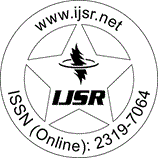Downloads: 136
Research Paper | Agronomy | Canada | Volume 5 Issue 8, August 2016
Phenotypic, Biochemical and Molecular Diversity of Phoma lingam Fungal Isolates Collected from Saskatchewan, Canada
Rafiq Ahad | Ginette Sguin-Swartz | Richard K. Gugel | Birger Koopmann
Abstract: The population of Phoma lingam associated with blackleg disease of canola (Brassica napus) is highly polymorphic, and infect various Brassicaceae species, including Thlaspi arvense (stinkweed). In order to determine the population composition and pathogenicity of P. lingam infecting T. arvense, 18 isolates recovered from T. arvense (designated Thl isolates) from different crop fields of Saskatchewan were compared with an aggressive (IBCN 2) and eleven less/non-aggressive reference strains. No common morphological, biochemical and pathogenic characteristics were found between Thl isolates and IBCN 2 strain. DNA fingerprinting and phylogenetic analysis of ITS-rRNA gene sequences revealed that the Thl P. lingam population of Saskatchewan is highly heterogeneous and comprised of at least eight genotypes. Over 50 percentage of Thl isolates clustered with different less/non aggressive reference strains belonging to L. biglobosa. Interestingly, a group of Thl isolates clustered with an aggressive reference strain, IBCN 2. Therefore, regular monitoring is required to determine if the Thl P. lingam population of western Canadian provinces is migrating from non-aggressive toward aggressive state.
Keywords: Blackleg disease, genetic diversity, ITS-rRNA sequence, oilseed rape, Phoma lingam
Edition: Volume 5 Issue 8, August 2016,
Pages: 436 - 443
Similar Articles with Keyword 'genetic diversity'
Downloads: 115
Research Paper, Agronomy, India, Volume 4 Issue 7, July 2015
Pages: 2585 - 2587Genetic Divergence among Advanced Breeding Lines of Medium Duration Rice (Oryza Sativa L.)
U. Praveen Kumar | Suresh B.G. | Ankit Kumar.M | Swamy.P.Y.
Downloads: 134
Research Paper, Agronomy, Tunisia, Volume 5 Issue 1, January 2016
Pages: 126 - 128Optimization of Reproducible Biochemical Genotype for Population: The Case of Trifolium Alexandrinum L., Fabacae
S. Rouz | F. Ben Jeddi | M.Zouaghi | Z. Ghrabi-Gammar
